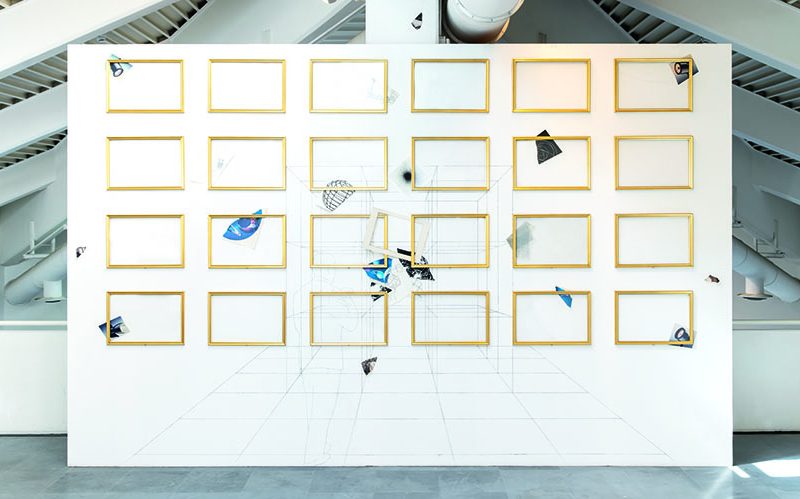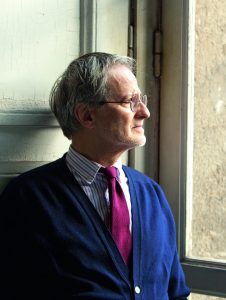
ART AND STAGE
The interplay between space and structure, artwork and spectator is typical of the work of Giulio Paolini. “In ascolto” is the link to his stage sets made for Richard Wagner’s operas. Curtain up!
Giulio Paolini

Giulio Paolini is one of the most famous names in the northern Italian Arte Povera movement and conceptual art. He was born in Genoa in 1940, attended graphic design school and had an early interest in fine arts. In 1960, he created his first iconic work, an ink drawing on a white canvas, the squaring of a rectangle, entitled “Disegno geometrico”, which is considered to be the conceptual basis for his later oeuvre. Two diagonals drawn with red ink mark the center of the picture; further lines are drawn with black ink and measured with a compass. Twenty years later, Giulio Paolini explained how the painting marked his birth as an artist. In an interview in “Marcatrè” in April 1966, he described it as the “conditions of the spatial framework in which a work of art could be born”.
Art as concept
Here his conceptual approach is already evident and the question of how his work is created and how it is exhibited emerges, a question that occupied Paolini throughout his artistic career. In contrast to Art Informel, Paolini dealt with the material, and formal foundations of art, canvas and frame became frequent motifs and made their appearance early on. Unlike other artists in the Arte Povera movement, with whom he participated in numerous exhibitions, Paolini has always considered himself to be part of an artistic tradition, playing with references to other artists and writers in his works. Another recurrent theme in his oeuvre is the questioning of creation, reproduction, and representation. Paolini works with different materials and techniques – canvas, sculpture, drawing, photography, collage, and is fascinated by the arrangement of objects in space, often creating different typologies, series, or juxtapositions, and illustrating centrifugal or centripetal movements.

Mise-en-scéne
Since 1969 he has also designed stage sets and costumes for theatrical performances, including projects conceived with Carlo Quartucci in the 1980s. In the 2000s he designed the stage sets for two works by Richard Wagner under the direction of Federico Tiezzi.
The work “In ascolto (stanza dello spettatore)” which will be auctioned at Dorotheum in November, is directly related to this. As described by Maddalena Disch, curator in charge of the Archive Paolini and the catalogue raisonnè, it was created for a solo exhibition at Galleria Artiaco that ran alongside the showing of Wagner’s opera “Die Walküre” (The Valkyrie) at the Teatro di San Carlo in Naples. Both the perspective lines in the background and the twenty-four golden frames can be seen as a direct reference to the stage set. According to Maddalena Disch it refers in particular to the third act, in which a gigantic metal structure at the centre of the stage is linked with gilded frames, in which plaster casts are housed. The life-size figure observing the scene refers to Lucio Amelio, Paolini’s former gallerist in Naples and the previous owner of the exhibition space for which “In ascolto” was created.
The pictorial elements between the frames arranged in a grid of 4 x 6 units are photographic reproductions of earlier works by the artist or frequent motifs from his iconographic repertoire. The loose fragments also echo other works. The perspective drawing on the wall contrasts with the structure created by the frames, in the center of which is a white passe-partout ‘illuminated’ by four virtual lamps in the corners of the picture. Playing with space and structure, representation and connotation, work of art and spectator, this work is typical of Giulio Paolini – “… a picture of all past, present and future paintings”, as Maddalena Disch states with reference to “Disegno geometrico”.
AUCTION
Post-War and Contemporary Art, 25 November 2020
Palais Dorotheum, Dorotheergasse 17, 1010 Vienna
20c.paintings@dorotheum.at
Tel. +43-1-515 60-358, 386













